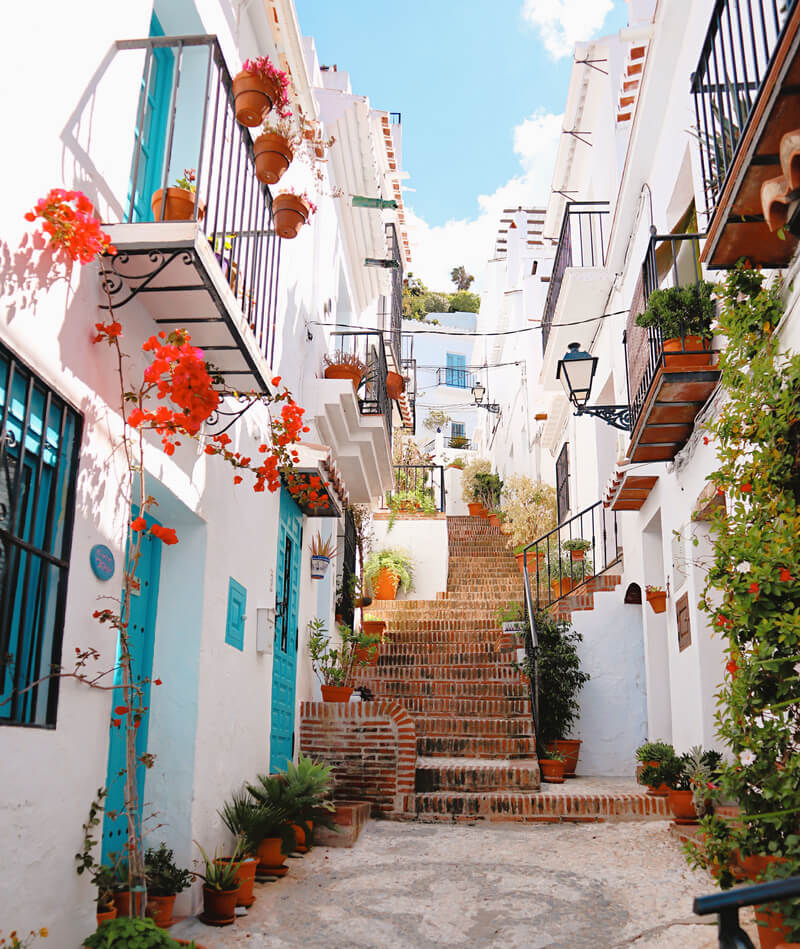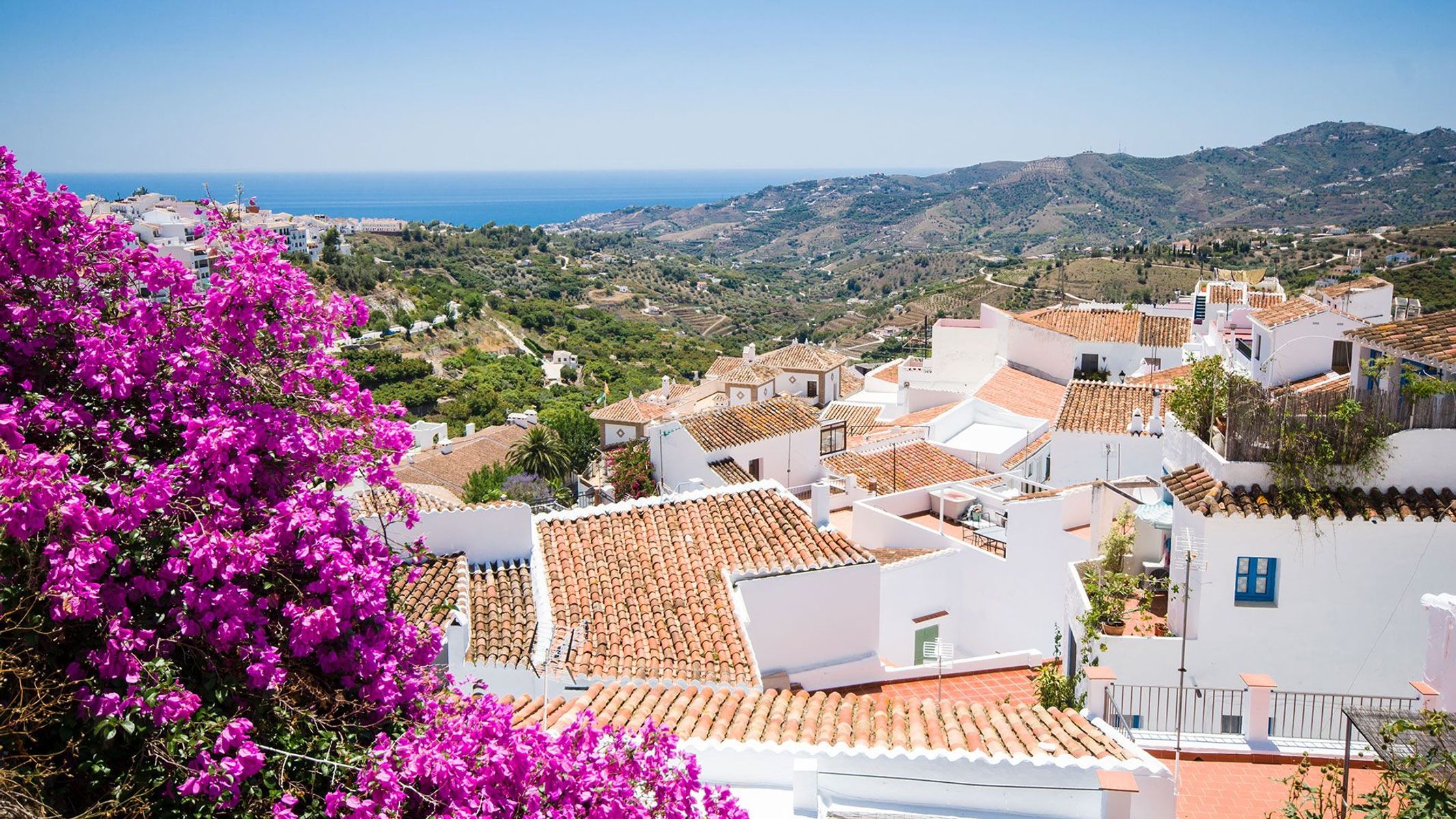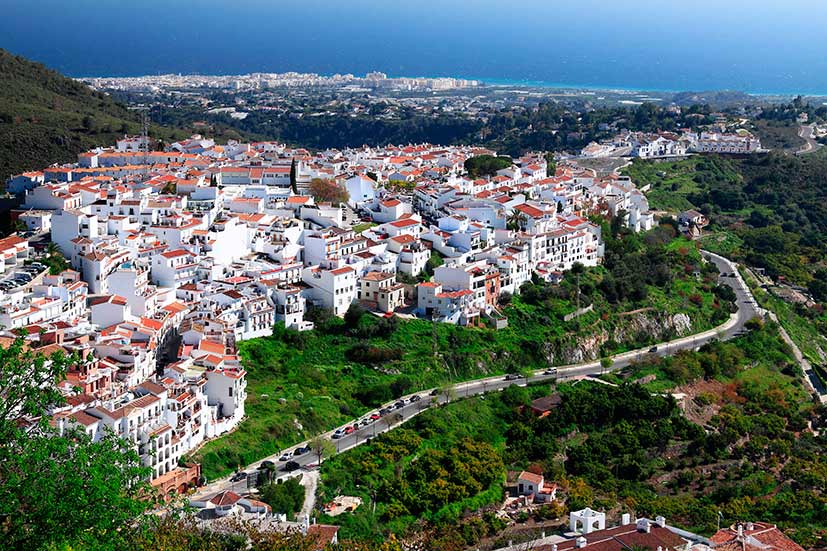Nestled in the Almijara mountain range, overlooking the sparkling Mediterranean Sea, lies a town that could easily be mistaken for a postcard come to life. Frigiliana, a small but utterly enchanting pueblo blanco in southern Spain, consistently ranks among the country's most beautiful towns – and for good reason. With its maze-like cobbled streets, dazzling white-washed walls, and a tapestry of colourful flowers adorning every corner, Frigiliana is a feast for the senses and a balm for the soul.

A Town Frozen in Time
As you meander through Frigiliana's narrow, patterned streets, you'll feel as though you've stepped back in time. The old town, or Centro Histórico, is a labyrinth of twisting pathways that wind their way up the mountainside. Each turn reveals new vistas, charming little shops, inviting bars, and quaint restaurants that beckon you to linger.
The entire town is cloaked in pristine white paint, a tradition so ingrained in the local culture that it's said if you don't paint your house white, the townsfolk will do it for you – and then present you with the bill! This uniformity creates a stunning backdrop for the riot of colours that burst forth from every nook and cranny.

A Floral Paradise
One of the most striking features of Frigiliana is its abundance of flowers. Bougainvillea, a personal favourite of many visitors, cascades down walls in shades of purple, red, and white. Blues, pinks, and a myriad of other hues adorn the streets, their vivid colours popping against the white-washed walls. Green grasses, palms, and cacti add depth to this living canvas, while colourful flower pots perched on windowsills and doorsteps contribute to the town's Mediterranean charm.

Breathtaking Views at Every Turn
As you ascend through the town, the views become increasingly spectacular. Rooftop bars and strategically placed viewpoints offer panoramic vistas of the surrounding landscape. Look out over the dusty green valley below, where mango and avocado trees stretch as far as the eye can see, reminiscent of the expansive plains of Africa. In the distance, the Mediterranean Sea glitters invitingly, a constant reminder of the Costa del Sol's allure.
A Relaxed Atmosphere
Life in Frigiliana moves at a gentle pace. There's a palpable sense of joy and contentment that permeates the air. No one rushes here; the year-round sunshine seems to have instilled a perpetual state of relaxation in both residents and visitors alike. This laid-back atmosphere is perfect for those looking to escape the hustle and bustle of modern life and immerse themselves in the simple pleasures of good food, beautiful surroundings, and warm hospitality.
Getting There: A Journey Worth the Effort
While reaching Frigiliana might require a bit of planning, the reward far outweighs the effort. The nearest major airport is Málaga-Costa del Sol, about 45 minutes away by car. If you're relying on public transport, your best bet is to make your way to the nearby town of Nerja first.

From Málaga Airport, you have a few options:
A direct bus to Nerja runs once daily at 2:30 pm on weekdays, taking about 1 hour and 45 minutes.
Alternatively, take a bus to Málaga's main bus station, from where regular buses depart for Nerja.
Once in Nerja, frequent buses run to Frigiliana for a nominal fee (cash only). The journey from Nerja to Frigiliana is short but scenic, winding through the countryside before depositing you in the heart of this enchanting town.
Where to Stay
While Frigiliana doesn't offer hostels, there are plenty of accommodation options to suit various budgets. For the best experience, try to find a place near the Centro Histórico. This central location will put you right in the midst of the town's charm and save you from trudging up and down hills to reach the main attractions.
Airbnb and Booking.com are your best bets for finding suitable accommodation, ranging from cosy apartments to charming bed and breakfasts. If you're on a tighter budget, consider staying in nearby Nerja and making day trips to Frigiliana.
When to Visit
Thanks to its Mediterranean climate, Frigiliana enjoys pleasant weather for much of the year. However, the summer months of July and August can be scorchingly hot and humid, making exploration less comfortable. Winter, while mild, can bring the occasional rainy day.
For the best experience, plan your visit between April and June or in September and October. During these months, you'll enjoy warm, sunny days perfect for exploring, without the intense heat of midsummer or the crowds that flock to the Costa del Sol in peak season.

Things to Do in Frigiliana
Despite its small size, Frigiliana offers a wealth of activities and experiences:
Explore the Old Town: Spend hours wandering through the labyrinthine streets of the Centro Histórico. Each corner presents a new photo opportunity, with flower-draped balconies, quaint doorways, and stunning vistas.
Visit the Arqueológico Museum: Learn about the area's rich history, from prehistoric times through the Moorish period and beyond.
Hike in the Sierras de Tejeda, Almijara y Alhama Natural Park: For the adventurous, numerous hiking trails offer stunning views of the countryside and coast.
Attend a Festival: If your visit coincides with August, don't miss the Festival de las Tres Culturas, celebrating the town's Christian, Muslim, and Jewish heritage.
Take a Cooking Class: Learn to prepare traditional Andalusian dishes using local ingredients.
Go Wine Tasting: Sample locally produced wines, including the sweet Muscatel for which the region is known.
Day Trip to Nerja: Visit the nearby coastal town of Nerja, famous for its beaches and prehistoric caves.
Culinary Delights
Frigiliana's cuisine is a reflection of its Andalusian roots, with a focus on fresh, local ingredients. Don't miss these culinary experiences:
Tapas Hopping: Spend an evening sampling small plates at various bars around town. Each establishment has its specialities, so be adventurous!
Try Local Specialities: Look for dishes featuring locally grown mangoes and avocados, as well as fresh seafood from the nearby coast.
Enjoy a Rooftop Dinner: Many restaurants offer terrace seating with panoramic views – perfect for a romantic evening meal.
Sample Local Wines: The surrounding region produces excellent wines, including sweet dessert wines that pair perfectly with local cheeses.
Staying Safe
Frigiliana is generally a very safe town, with low crime rates and friendly locals. However, as with any travel destination, it's wise to take basic precautions:
Be aware of your surroundings, especially when walking on the narrow, sometimes steep streets.
Stay hydrated, particularly during the warmer months.
Use sunscreen and wear a hat when out exploring – the Spanish sun can be intense.
While crime is rare, keep an eye on your belongings in crowded areas.
A Town That Captivates
Frigiliana is more than just a beautiful facade; it's a town that captures hearts. The gentle buzz of conversation from sidewalk cafes, the scent of jasmine on the evening air, the warm glow of the setting sun on white-washed walls – these are the moments that will linger in your memory long after you've returned home.
Whether you're seeking a romantic getaway, a peaceful retreat, or simply a chance to experience authentic Andalusian culture, Frigiliana delivers. It's a place where time seems to slow down, where each meal is an event to be savoured, and where the beauty of your surroundings never ceases to amaze.
So, is Frigiliana Spain's most beautiful town? Beauty, as they say, is in the eye of the beholder. But as you stand on a rooftop terrace, glass of local wine in hand, watching the sun set over the Mediterranean while the white town glows golden in the fading light, you might just find yourself thinking that yes, this could very well be the most beautiful place in all of Spain.